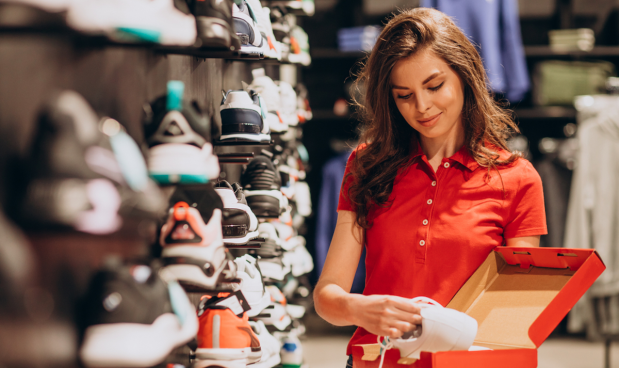Shoppers Demand More Experiential Brick-and-Mortar Stores

With eCommerce often proving the most convenient option for the practical elements of shopping, consumers are demanding brick-and-mortar retailers provide them with an experience they cannot get online.
Foot Locker on Wednesday (April 24) announced its new “store of the future” in Wayne, New Jersey, a retail format that will provide learnings to be incorporated into new stores as part of the footwear and apparel retailer’s global refresh.
The store’s layout that is meant to drive discovery and to allow for easier navigation, with new releases and trending products highlighted in designated sections near the entrance. It aims to provide better brand storytelling. On the back end, the company aims to integrate the store with new digital capabilities that enable employees to work more efficiently.
“Our new store concept cements Foot Locker’s position as the leader in sneaker culture by offering an engaging, cutting-edge shopping experience for the sneaker passionate,” Mary Dillon, the retailer’s president and CEO, said in a statement.
Physical stores are no longer standalone entities but integral parts of a larger omnichannel retail strategy. They serve as touchpoints where customers can experience products firsthand, make purchases, or engage with the brand physically. As eCommerce grows, physical stores are adapting their layouts and designs to accommodate changing consumer behaviors. Some retailers are reducing store sizes or redesigning spaces to focus more on experiential elements rather than product display.
For instance, on Best Buy’s last earnings call, CEO Corie Barry explained that with consumers no longer solely dependent on stores to become familiar with a given location’s inventory, the company can offer a more streamlined in-person experience.
“We plan to touch every single store in the chain in some fashion, improving both our merchandising and ease of shopping for customers,” Barry said. “This includes improving and livening the merchandising presentation, given the shift to digital shopping and corresponding lower need to hold as much inventory on the sales floor.”
Plus, Walmart has its Store of the Future concept, which incorporates interactive technology that blends online and in-person shopping.
At their best, physical stores can serve as community hubs where customers can engage with the brand on a local level, with retailers hosting events, workshops, or demonstrations to foster a sense of community and encourage repeat visits.
“We’re … leaning in pretty heavily with store events,” Raina Khumush, director of marketing and digital at Buybuy Baby, told PYMNTS in an interview last month. “So, we are trying to create a cadence of very regular store events, so that our customers that do happen to live within driving distance of a store can come in on a regular basis and interact with us and our vendors and have some really interesting and cool in-person experiences with us.”
Khumush added that these experiences have included store openings and registry-building events and that all have included a giveaway component.
Foot Locker’s new store, for its part, includes a communal try-on spot for shoppers to “connect and experience the inclusivity of sneaker culture.”
These updates come as the rise of digital transforms consumers’ expectations, with many shoppers now interacting with retailers both via online and physical channels, according to the PYMNTS Intelligence study “2024 Global Digital Shopping Index: U.S. Edition,” created in collaboration with Visa Acceptance Solutions. The report, which draws from a survey of more than 2,400 U.S. consumers, found that close to 1 in 3 are Click-and-Mortar™ shoppers, opting for a purchasing journey that involves both digital tools and physical locations.
Specifically, the study noted, 1 in 5 consumers are digitally assisted in-store shoppers, preferring to use digital tools to improve their brick-and-mortar journey, and 11% are pickup shoppers, preferring to place orders online to collect at the store. Still, a significant share of consumers continue to shop the old-fashioned way, with 44% preferring to simply make purchases in stores without digital assistance.

